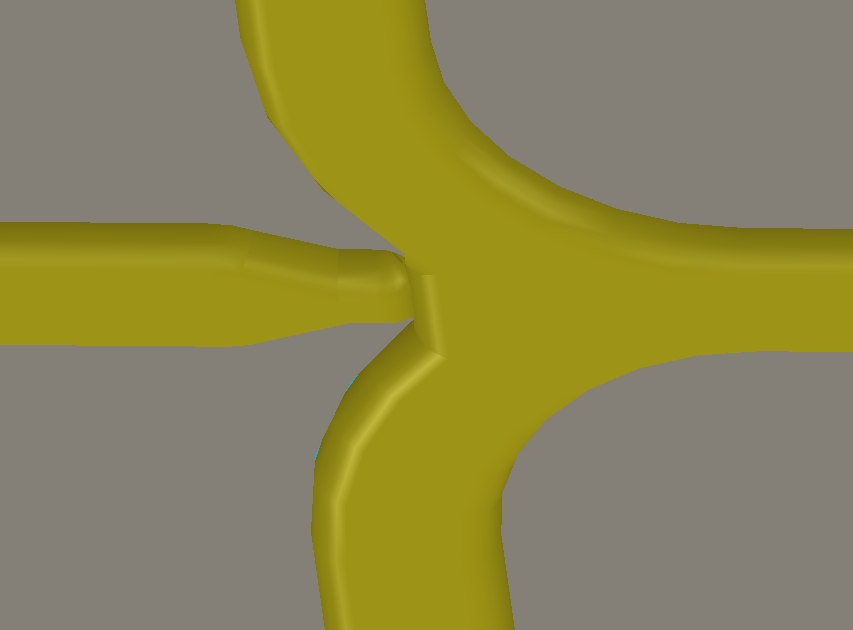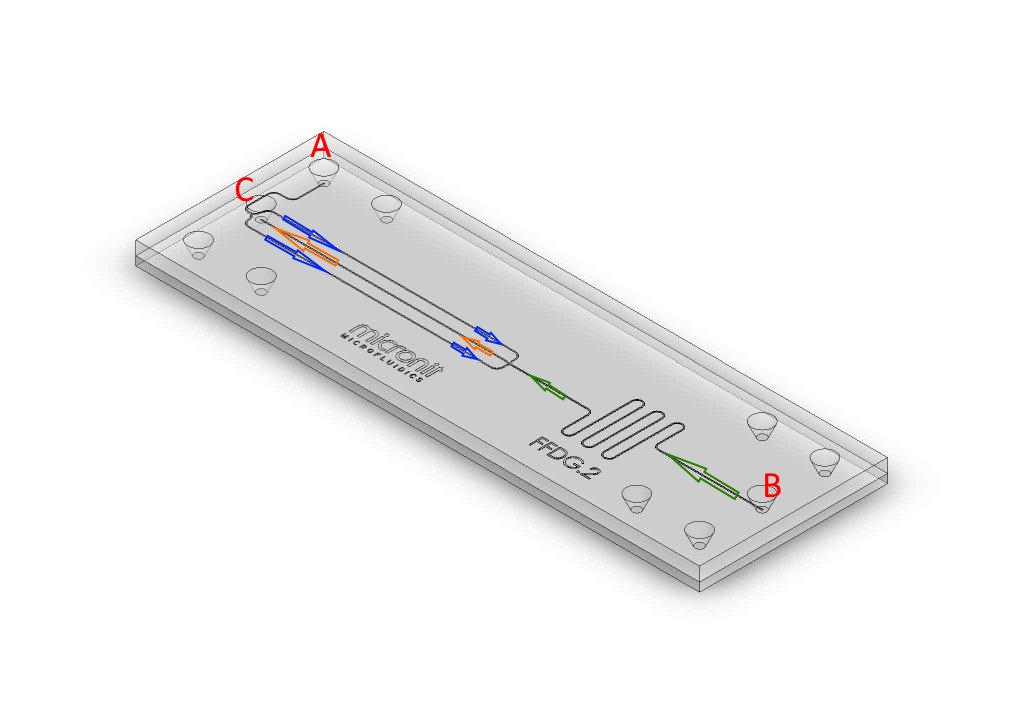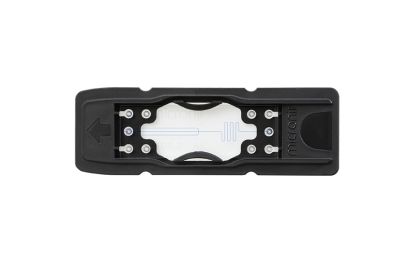shopping_basket
Classic focused flow droplet generator, small - Top Connect
SKU
11002889
Availability:
check_circle In stock
$660.28
per pack of 3
Classic droplet generator with a nozzle height of 10µm and channel size of 100x20µm. The channels have half semi-oval shape.
In experiments reference droplets with a size <60µm and >10µm where produced.
In a reference experiment oil droplets inside a water flow where produced with a size small than 60µm an large than 10µm.
The channels have a half semi-oval channel shape. The droplets produced in the reference expriment are not fully round but oval because the droplet size is larger as the channel height.
The channel height is 20µm
When fully round droplets are desired, the "new generation" droplet generator is your choice.
The nozzle has a height of 10µm an has the following shape:
We recommend an alternative flow direction for our "classic" droplet generators for optimal performance:
| Inlet/Outlet | Description | Arrow colour |
| A - Inlet |
Continuous Phase |
Blue |
| B - Inlet | Dispersed phase (droplet content) |
Green |
| C - Outlet | generated emulsion | Orange |
| Unit of measurement | pack of 3 |
|---|---|
| Alternative item references | 02889, FFDG.2 |
| Interface type | Topconnect |
| Chip material | Borosilicate glass |
| Fluids | Oil droplets inside a water flow (uncoated, hydrophilic surface) |
Customer Questions





